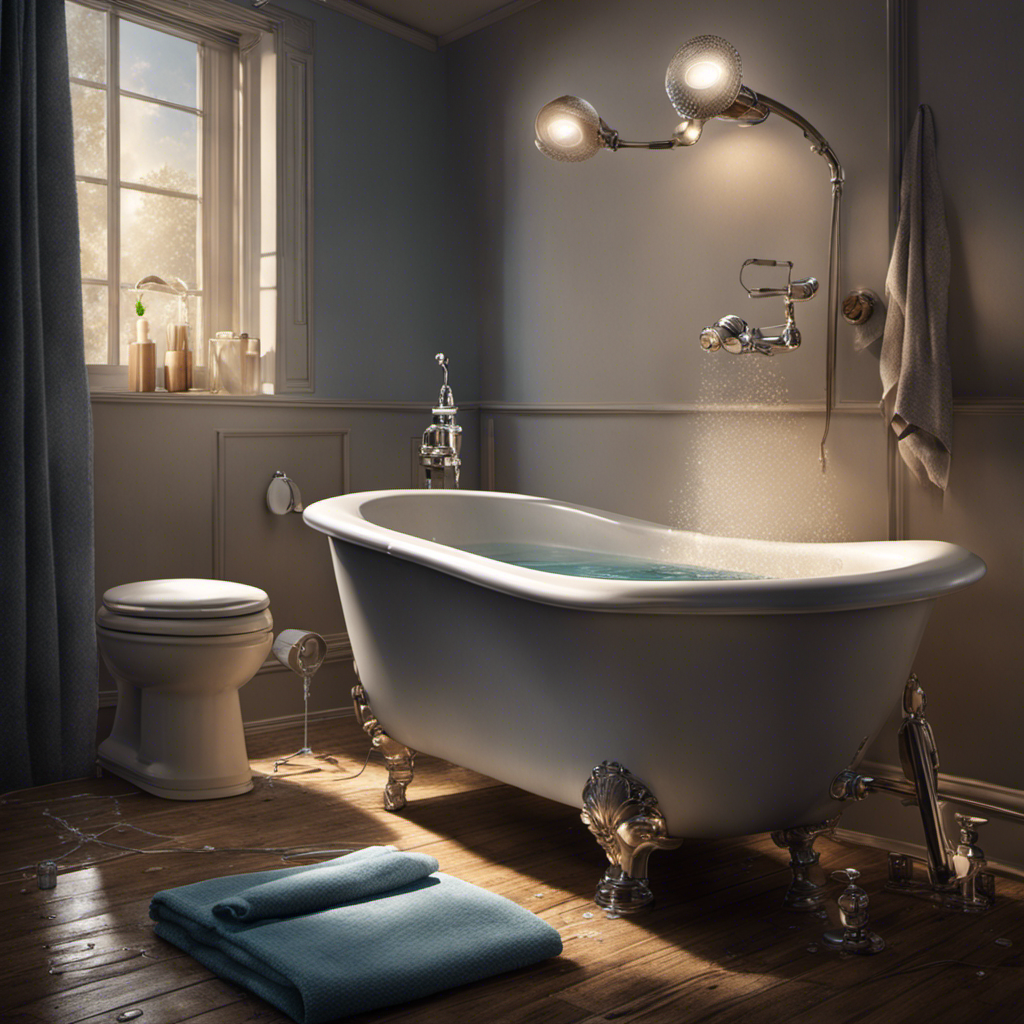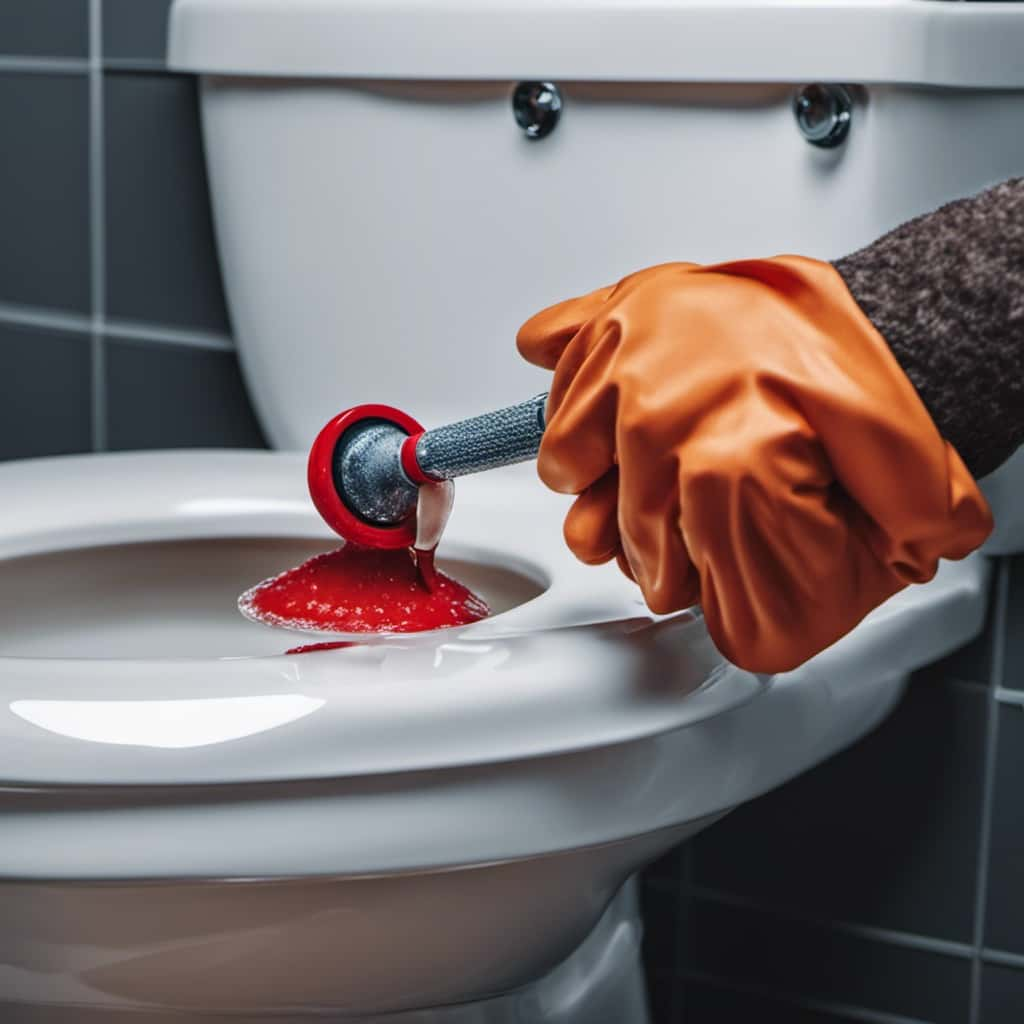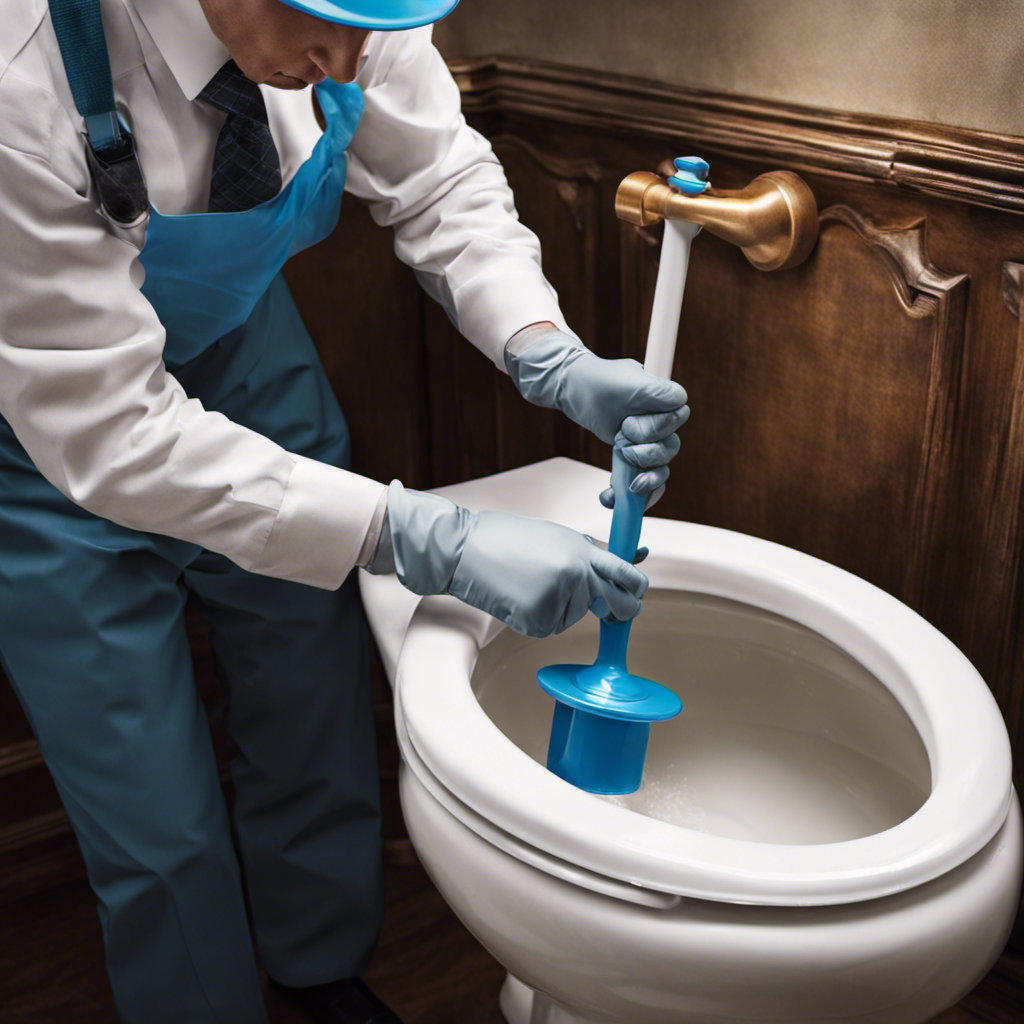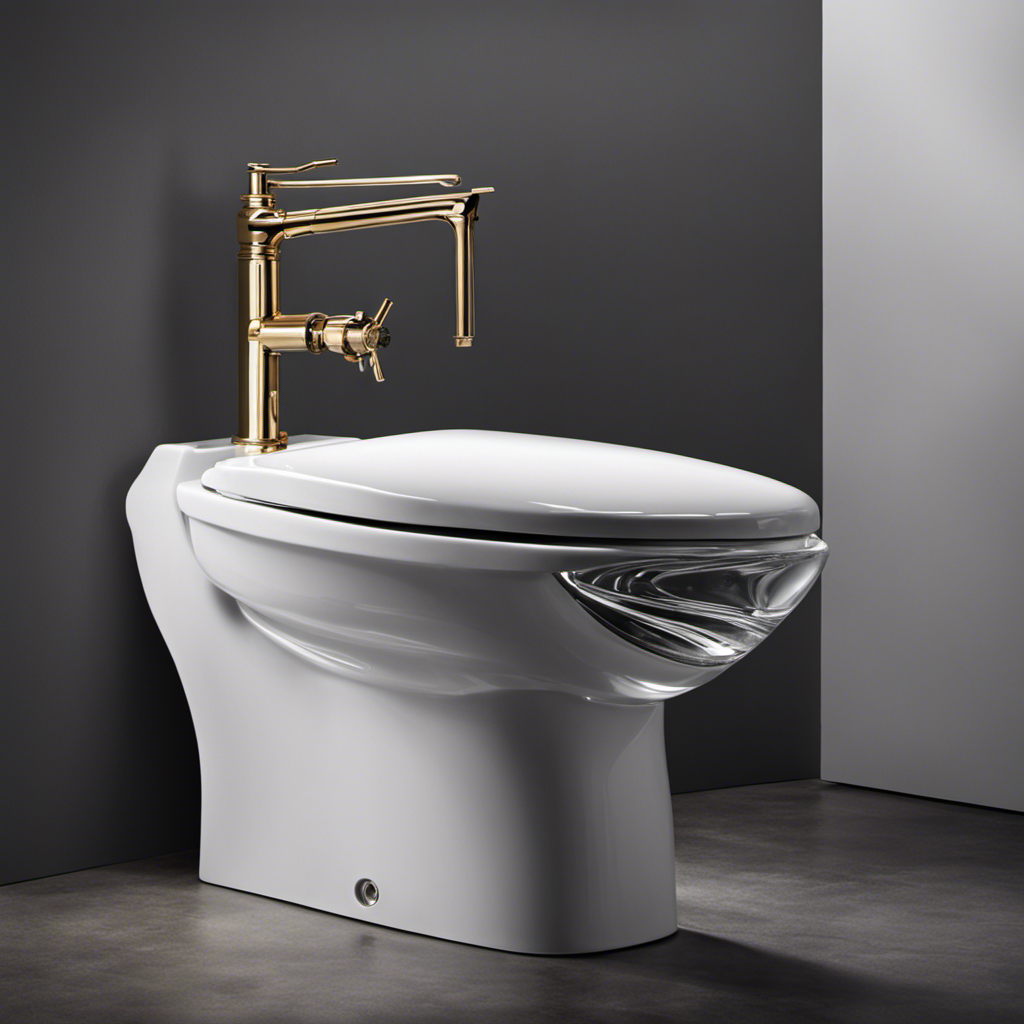Hello there!
Ever wondered if flushing the toilet actually costs money in the UK? Well, we’ve got the answers for you.
In this article, we’re going to delve into the average water usage for toilet flushing, break down the factors that affect the cost, and even offer some tips to reduce those flushing expenses.
Plus, we’ll explore alternative methods that can potentially save you some cash.

So, let’s dive in and master the art of saving money while keeping things clean and fresh!
Key Takeaways
- Average water usage for each flush in the UK is approximately 9 liters.
- Installing low-flow toilets can reduce water consumption and save money.
- Being mindful of flushing habits, such as only flushing when necessary, can conserve water.
- Water leaks can result in wasted water and increased costs.
Average Water Usage for Toilet Flushing
On average, we use approximately 9 liters of water for each flush of the toilet in the UK. This toilet water consumption has a significant impact on water bills. By understanding how much water is being used with each flush, we can take steps to reduce our consumption and save money.
One way to do this is by installing low-flow toilets that use less water per flush. These toilets are designed to be efficient while still maintaining their effectiveness.
Additionally, being mindful of our flushing habits can also make a difference. For example, only flushing when necessary and avoiding using the toilet as a waste bin can help conserve water.

Understanding Water Charges in the UK
To understand how flushing the toilet impacts our water bills in the UK, let’s delve into the details of water charges.
In the UK, water charges are typically based on metered usage, which means that you pay for the amount of water you consume. Understanding water metering is essential to grasp how your usage affects your bills.
Water leaks can have a significant impact on water charges as well. Even a small leak can result in wasted water and increased costs. To avoid unnecessary expenses, it’s crucial to regularly check for leaks and promptly fix any issues.
Factors Affecting the Cost of Flushing
Flushing the toilet in the UK incurs a cost due to various factors that impact water usage and billing.

One significant factor is the type of toilet being used. Traditional toilets use a large amount of water per flush, resulting in higher water bills. However, water-saving toilets are designed to use less water without compromising flushing efficiency. By installing water-saving toilets, households can reduce their water consumption and lower their flushing costs.
Another important factor is water consumption analysis. Water companies use meters to measure the amount of water used by each household. By analyzing this data, companies can determine the exact amount of water consumed for flushing, enabling them to accurately calculate and charge for the cost of flushing.
Understanding these factors can help households make informed decisions to reduce their flushing costs.
Tips for Reducing Toilet Flushing Costs
To reduce toilet flushing costs in the UK, we can implement several simple and effective tips. By following these tips, we can contribute to toilet water conservation and choose eco-friendly toilet options. Here are some practical strategies to reduce flushing costs:

| Tips for Reducing Toilet Flushing Costs |
|---|
| 1. Install a dual flush toilet: These toilets have two buttons, allowing you to choose a full flush or a half flush, depending on your needs. This reduces water usage significantly. |
| 2. Fix leaks promptly: A leaking toilet can waste a large amount of water. Regularly check for leaks and repair them promptly to avoid unnecessary costs. |
| 3. Use a displacement device: Placing a plastic bottle filled with water in the toilet tank reduces the amount of water used per flush. |
| 4. Educate household members: Teach everyone in your household about the importance of water conservation and encourage them to use the toilet responsibly. |
| 5. Consider composting toilets: These eco-friendly options use little to no water for flushing and can be a cost-effective long-term solution. |
Exploring Alternative Toilet Flushing Methods
When exploring alternative toilet flushing methods, we can continue our discussion on reducing flushing costs by considering innovative options.
Toilet flush innovations have come a long way in recent years, offering eco-friendly toilet options that can help save money on water bills. One such option is the dual flush toilet, which allows users to choose between a full flush and a half flush depending on their needs. This can significantly reduce water usage, especially for liquid waste.
Another eco-friendly option is the composting toilet, which uses little to no water and converts waste into compost that can be used as fertilizer.
These alternative flushing methods not only save money but also contribute to a more sustainable and environmentally friendly lifestyle.

Frequently Asked Questions
What Is the Average Water Usage for Toilet Flushing in the Uk?
The average water usage for toilet flushing in the UK varies depending on the efficiency of the toilets. Water saving toilet options can help reduce water consumption and save money in the long run.
How Are Water Charges Calculated in the Uk?
Water charges in the UK are calculated based on a combination of factors, including water meter readings and fixed charges. By monitoring our water usage and paying these charges, we ensure a fair and sustainable system for everyone.
What Are the Factors That Affect the Cost of Toilet Flushing?
Factors such as water usage, type of toilet, and water rates impact the cost of flushing. These factors determine how much water is used and the corresponding charges, which can vary in the UK.
What Are Some Tips for Reducing Toilet Flushing Costs?
Reducing water wastage is essential in lowering toilet flushing costs. By implementing simple measures like fixing leaks and installing water-saving devices, we can reduce our toilet water usage statistics and save money in the long run.

Are There Any Alternative Toilet Flushing Methods That Can Help Save Money in the Uk?
Water saving toilet options like dual flush toilets are a great way to save money in the UK. They allow us to control the amount of water used, reducing costs while still maintaining proper hygiene.
Conclusion
In conclusion, flushing the toilet does cost money in the UK. The average water usage for toilet flushing, combined with water charges, can contribute to the overall cost.
Factors such as the type of toilet and water-saving measures can affect the cost. To reduce flushing costs, consider implementing water-saving tips and exploring alternative flushing methods.
Remember, every drop counts, so make sure to be mindful of your water usage to save both the environment and your wallet. As the saying goes, ‘A penny saved is a penny earned.’











